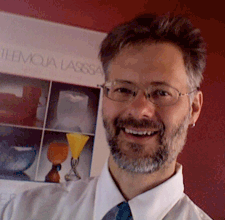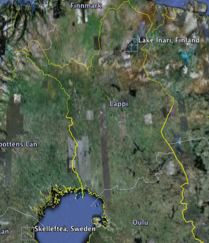Pilgrim Reindeer in Pisa, 1348
a free multimedia novel by
Thomas A. DuBois, University of Wisconsin-Madison
 |
Pilgrim Reindeer in Pisa, 1348 a free multimedia novel by Thomas A. DuBois, University of Wisconsin-Madison |
|
|
|
1. Part I Setting Out 8. The Skellefteå Mission [July 30, 1347]
In this chapter I wanted to start developing the character of Pekka more. At first, Bávlos just experiences him as a nameless stranger, but after travelling with him for some time, we see Bávlos becoming interested in the story of his companion, something that remains a mystery to him. I got the idea of having Pekka come from Skellefteå because I visited that church some years back as part of my research on wood carving. As the crow flies, Skellefteå is not so very far from the place where Bávlos starts out (actually about 350 miles), but it is another matter if one is walking or driving that distance, crossing dense forest and large rivers. Culturally, Skellefteå marked a northern boundary of the Swedish cultural area: an outpost of Swedish culture in an area long dominated by Sámi.
 |
| Image courtesy Google Earth |
As the map shows, Pekka has gone badly off course in his efforts to reach Turku. Instead of hugging the Baltic coast, as he should have, he had strayed deep inland and to the north. It is thus only with Bávlos's help that he stands a chance of returning to Turku.
The divinatory dream was a lot of fun to write. I wanted to depict Bávlos as having definite abilities and Pekka as anxious to take advantage of these, even if, on some level, he must regard Bávlos's gifts as somehow demonic. Over and over again in the historical record we read of Christians who were not above consulting diviners from other religious traditions when they were anxious to gain some information. Finnish legends about Sámi seers are frequent and widespread, and formed the basis for my portrayal.
I also enjoyed playing with the idea of Pekka as a quintessially insensitive character: unable to perceive the sacrifices or difficulties suffered by Bávlos as he enters a Finnish-speaking world while focusing on the comparatively small inconveniences he suffered while in Skellefteå. This contrast between the two characters will build in coming chapters.